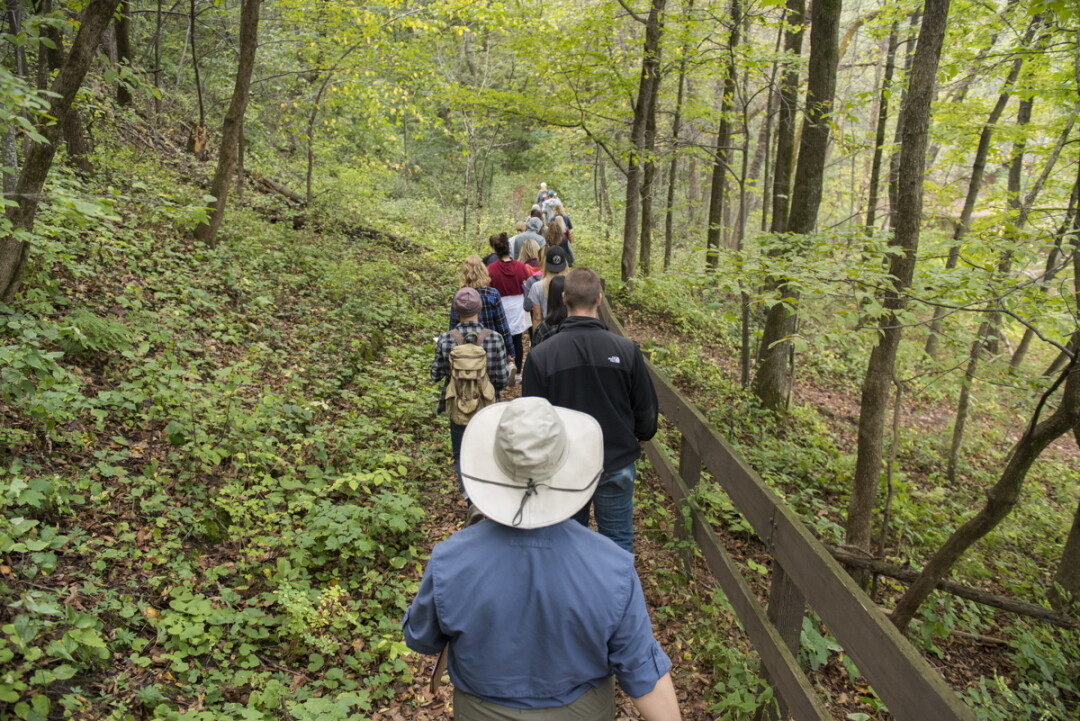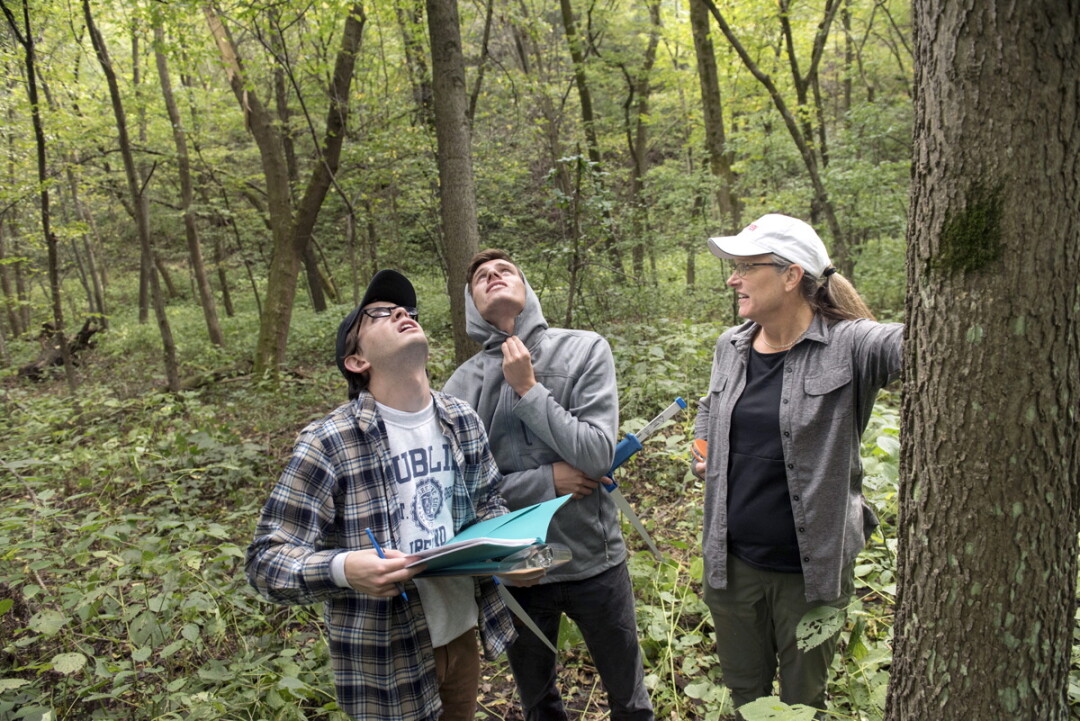Friends Indeed
preservation a priority for newly formed Friends of Putnam Park
Nathan Hopp, photos by UW-Eau Claire News

In 1909, lumber baron and local philanthropist Henry Cleveland Putnam donated a 230-acre parcel of land to the City of Eau Claire, hoping the low-lying stretch would be preserved as a botanical laboratory due to its diverse wildlife. Ownership of the park was then transferred to UW-Eau Claire nearly 50 years later, but H.C. Putnam’s legacy still lives on in the community.
“Putnam slowly obtained the land piece by piece and opened it to the public,” said Timothy Hirsch, who has lived beside the park for more than 30 years. “Even though it was still owned by him, he was concerned what it would be used for in the future.” The parcel’s future was addressed in a 12-page property deed written by H.C. Putnam himself.
Hirsch’s backyard borders Little Niagara Creek and gives him a view of the land’s inhabitants. Squirrels, robins, beavers, and even bald eagles have made this rich habitat their home. “I enjoy being here five minutes from downtown, 20 if I walk, and at the same time being in an environment where I can see diverse creatures and plants in my backyard,” Hirsch said.
However, outside threats including invasive species such as wild parsnip and buckthorn, and nearby urban development projects have prompted Hirsch and fellow residents into action, forming a new nonprofit organization dedicated to the land’s preservation called Friends of Putnam Park.

Hirsch was inspired to form the organization after a member of the Putnam Park Commission told him how isolated they were in public opinion. Many questions remain up for debate, such as to what degree invasive species and overgrowth of plants need to be removed without disturbing the natural area of Putnam Park, and whether to have citizen scientists contribute in the decision-making process. Hirsch expressed how much he felt there needed to be a broader citizen participation.
Other concerns, including the usage of pesticides and awareness of the consequences of housing developments such as Putnam Heights have also led citizens who live near the park to debate these issues. There is the possibility that the group will face legal obstacles as well.
The Friends of Putnam Park are having an organizational meeting at 4pm Sunday, May 5, at the Unitarian Universalist Church, 421 S. Farwell St. Hirsch hopes many people will come and participate in this new organization, whether they are dedicated citizens or casual visitors to the park. The preliminary draft of their mission statement includes goals such as, “To promote and facilitate appropriate uses of the park,” and “To protect Putnam Park and help sustain the continuing health of its plants, animals, waters, air and soils, for today and the future.”
“Putnam Park is an absolute jewel, absolutely beautiful, and an incredible resource to the city,” Hirsch said.

